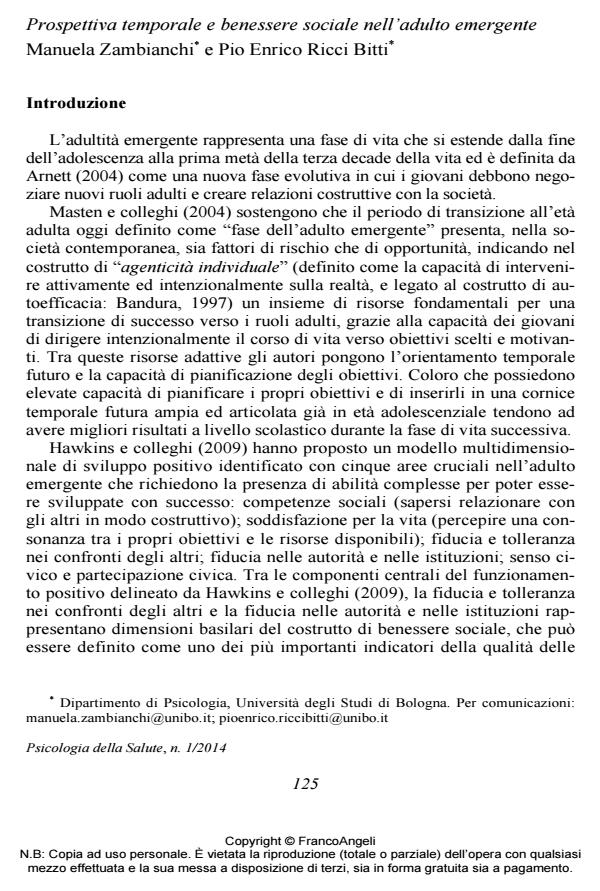Time Perspective and Social Well-being in Emerging Adulthood
Journal title PSICOLOGIA DELLA SALUTE
Author/s Manuela Zambianchi, Pio Enrico Ricci Bitti
Publishing Year 2014 Issue 2014/1
Language Italian Pages 14 P. 125-138 File size 795 KB
DOI 10.3280/PDS2014-001007
DOI is like a bar code for intellectual property: to have more infomation
click here
Below, you can see the article first page
If you want to buy this article in PDF format, you can do it, following the instructions to buy download credits

FrancoAngeli is member of Publishers International Linking Association, Inc (PILA), a not-for-profit association which run the CrossRef service enabling links to and from online scholarly content.
The study analyzed the relationship between time perspective and social well-being in 386 undergraduates (mean age 21.72; 110 males and 276 females). They filled in two self-report questionnaires, the Questionnaire on Social Well-being and the short form of the Zimbardo Inventory on Time Perspective (STPI), that includes two subscales, the present and the future. The differences of gender on time perspective and social well-being was also considered. Correlational analysis showed that future time perspective is positively correlated with all the dimensions of social well-being and with social wellbeing as overall score, while present time perspective is negatively correlated with social actualisation, social coherence and general social well-being. A multiple regression model evidenced future time perspective as positive explicative variable of overall social well-being. Results confirm the relevance of time dimension for social well-being during the stage of emerging adulthood and suggest to investigate in a more systematic way the role of time perspective in the positive development of emerging adults.
Keywords: Time perspective, social well-being, emerging adult
- Efficacia sulla salute di un corso annuale di Biodanza: uno studio empirico Maria Teresa Giannelli, Patrizia Giannino, Alessandro Mingarelli, in PSICOLOGIA DELLA SALUTE 1/2015 pp.84
DOI: 10.3280/PDS2015-001009
Manuela Zambianchi, Pio Enrico Ricci Bitti, Prospettiva temporale e benessere sociale nell’adulto emergente in "PSICOLOGIA DELLA SALUTE" 1/2014, pp 125-138, DOI: 10.3280/PDS2014-001007